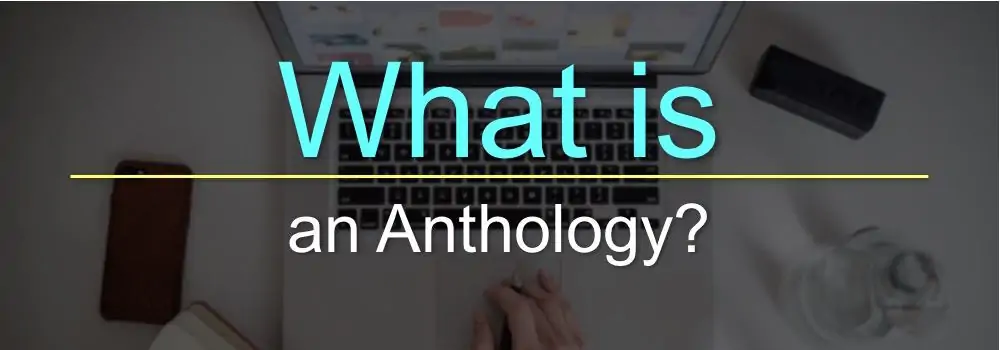
5 Ways You’ve Been Doing Your Citations Wrong
Correctly citing the sources you used to write a paper, whether it is in MLA format or another style, is an important aspect of writing. It prevents plagiarism, gives proper credit to the appropriate people, and helps the reader of your work identify where they can find additional information on the topic. It is easy, however, to make mistakes when making citations, especially when your paper is due ASAP!
Let’s take a look at some of the most common errors made when making citations, and at some tips on how you can avoid making them in your next paper.
1. Incorrect Paraphrasing
Incorrect paraphrasing is an all too common way that students fall into the trap of committing accidental plagiarism. This usually occurs when the writer simply replaces only one or two words of the phrase they are paraphrasing, and puts it into their paper as if it was their own original idea. To prevent this from happening in your paper, you must be sure to write the idea in a new way. Two easy ways to ensure you do this effectively is to 1. Change the sentence structure of the phrase, and 2. Use synonyms for the phrase’s keywords. Then, follow the paraphrased text with a parenthetical citation.
2. Incorrectly Placed Periods
For in-text or parenthetical citations in virtually every citation style, the period follows the parenthesis. For example: (Brown, 1995). Be sure that you don’t accidentally include the period or other punctuation mark within the parenthesis.
3. Inconsistency in Citation Style Used
It is all too easy to slip into using various citation styles within one paper, especially if you are using one for the first time. Be sure to double check your citations at the end of your paper to ensure that they all conform to the same style and format. This is especially important if your professor does not specify which citation style you should use. To make your references clear to the reader, consistency is key.
4. Leaving Citations Out of the Reference List/Works Cited Page
Every in-text citation—like parenthetical APA citations or footnotes in Chicago style—in your paper must correspond to an entry in a reference list or works cited page. A common mistake is to overlook a parenthetical citation and therefore omit it from the reference list. One easy way to prevent this from happening is to make your reference list as you write your paper, instead of waiting until the end of the paper writing process. This will ensure that no citation gets missed.
5. Adding the Same Reference After Each Sentence
Believe it or not, there is such a thing as over-citing! If all information in one paragraph refers to the same source, you only need to provide a single citation at the end of the entire paragraph, not after each individual sentence. Just be sure to include the relevant author, date, or page number information, depending on which citation style you are using.
You can use BibMe Plus’s bibliography tools and grammar check to not only help create accurate citations for your paper, but also to see if there are edits that could make your paper stronger. It makes correctly citing your sources and turning in a great paper a much simpler, quicker and easier task all round. ...

Why Do I Need to Proofread?
Many of us write our papers and think we’re good to go. We’ve researched our topic, cited our sources, and even written a great thesis statement. BUT WAIT. Don’t fall into the trap of assuming that spell check has caught all of your grammar and spelling mistakes. Doing that last read through and grammar check yourself could make all the difference. Read on for some real-life proofreading fails, and why proofreading is important.
Proofreading Fails
“A friend once wrote a letter to an ASL professor and accidentally wrote ‘Deaf Professor’, instead of ‘Dear Professor’.”
– Iana, NYC
“Rachel Ray Finds Inspiration in Cooking Her Family and Her Dog.”
– Headline of October 2016 issue of Tails magazine
I have a friend whose autocorrect turned "I will show you" into "I will shank you." And she sent it before catching that.
– Amanda, Texas
“With high hope for the Euture, no prediction in regard to it is ventured.”
– Misspelling of the word “future” on the Lincoln Memorial, Washington, D.C.
Why You Need to Proofread
- Proofreading makes sure that you haven’t left out any important information from your paper. You might be missing an important point you were planning to include!
- It checks for spelling, punctuation, and grammar mistakes. One great way to ensure you are proofreading effectively is to read your paper out loud. Chances are if it sounds weird, then something should be fixed.
- It helps make sure you are presenting your argument clearly to the reader. It can prompt you to move things around and reorganize your thoughts if needed.
- Proofreading shows your professor or teacher that you take pride in your writing and are dedicated to writing a quality paper. They can tell if you didn’t put in enough effort very quickly if they notice tons of typos!
- It will help you receive a better grade on your paper.
Proofreading Checklist
After finishing an essay, our first urge is to triumphantly close out of the document in celebration of a job well done—but before calling it a day, you need to proofread.Everyone makes mistakes, regardless of how strong they are at writing, and these mistakes can drag down the quality of a work. Make sure to go through your piece with a finely toothed comb, looking for errors that wouldn’t come up on a simple spell check.
What specifically should you be looking for as you proofread your work? We’re here to help, with a handy proofreading checklist complete with all the questions you ought to ask yourself as you read through the essay.
For an easy grammar check online, check out BibMe Plus. Upload your paper to automatically scan for grammatical errors for free. Best of all, it's there when you need it since it's available 24/7.
Grammar
- Did I employ consistent verb tense throughout the paper? (past, present, future)
- Did my pronouns (e.g. I, We, He, Her, They, Anyone, etc.) agree with their antecedents? Are my pronouns vague?
- Examples:
- No → The puppies were so active that itself spent the whole day running around the park.
- No → The puppies were so active that she spent the whole day running around the park.
- Yes → The puppies were so active that they spent the whole day running around the park.
- Did I include unnecessary commas?
- Did I add commas after introductory elements/compound sentences?
Spelling
- Did I run a basic spell check?
- Did I do a basic read through on my own? We often miss small errors while we’re writing.
- Did I make sure to hyphenate any words requiring a hyphen?
Sentence Structure
- Did I write in active voice? Did I mostly use active verbs and rarely employ “to be verbs”?
- Did I vary my sentence structure enough? By writing sentences of various lengths and structures, it keeps your writing more interesting.
- Did I keep my writing concise? Did I steer clear of using unnecessary words?
- Example:
- No → The really cool trickster figure in Hawaiian mythology is pretty much Maui. After some research, I found that according to legend, he like created the Hawaiian islands using a totally weird magic fish hook.
- Yes → The trickster figure in Hawaiian mythology is Maui. According to legend, he created the Hawaiian islands using a magic fish hook.
Word Choice
- Did I avoid using jargon-y language that might be confusing to readers?
- Did I use the precise word each time? Did I make sure I understand the definitions of all words used?
- Did I consider the connotations of the words I used, in addition to the dictionary definitions?
- Did I avoid using slang and other informal terms (eg. stuff)?
Transitions
- Did I make sure my sentences flow into each other smoothly?
- Did I connect my paragraphs to one another? Did I use transition words like although, however and therefore?
Formatting
- Did I keep my font and font size consistent throughout the paper? Did I use an easy-to-read font like Arial or Times New Roman?
- Did I double-space my paper? Did I keep the spacing consistent throughout?
- Did I remember to indent before all new paragraphs?
- Did I properly cite all sources used within my paper? Did I use MLA format or whatever proper citation style my teacher asked for? Did I keep citations consistent throughout my paper?
- Did I include necessary footers and headers?
- Did I add page numbers, if requested?
General Tips
Remember, we all make mistakes sometimes, so no worries if your essay requires further revision upon proofreading. If you don’t feel confident in your own ability to evaluate your work, consider asking a friend to look at your essay, keeping these specific checklist items in mind.To assess the flow of your piece, try reading the whole thing aloud. If you find yourself stumbling over words as you read your own work—or find the words confusing—revisions are in order.
Did your teacher ask for APA citations, or citations in another style? Visit BibMe to generate citations easily! ...

CMoS 17 is Here! See What’s Changed
The Chicago Manual of Style (CMOS) has been one of the most popular writing resources since its first publication in 1906. Earlier this fall, the University of Chicago Press presented their 17th edition of the official manual. Here at BibMe, we took a look and examined what has changed in CMOS 17. See below for our overview of what we think you need to know about the updated citation formatting rules.
CMoS 17: Notes-Bibliography Style
How to format titles for websites.
If the website you are trying to cite has a print counterpart, such as the website for a newspaper, the title should be in italics. If it does not, it should not be in italics.
Example:
- The Wall Street Journal
- Gizmodo
The use of “ibid.”
Instead of using “ibid” for repeated citations, CMoS 17 now prefers that a shortened version of the footnote is used.
Examples:
- Henry, The Ambassadors, 401–2.
- Henry, 433.
- Gailbraith, The Silkworm, 37–38.
- Gailbraith, 201–2.
CMoS 17: Author-Date Style
Repeating the year in certain author-date citations.
It is now acceptable to repeat the year in citations where the month and day are listed.Lin, Meng-Fen Grace, Ellen S. Hoffman, and Claire Borengasser. 2013. “Is Social Media Too Social for Class? A Case Study of Twitter Use.” New York Times, February 15, 2013. Accessed March 2, 2013. http://www.nytimes.com/2013/03/02/science/social-media.
For more information on CMoS 17, please visit the official Chicago Manual of Style website.
Need general citing your sources in Chicago or Turabian style? BibMe here, at your service! Use our citation services to easily create citations for websites, pictures books, online videos, and much more! In case you don’t need Chicago style, it should be mentioned that BibMe also supports citations in MLA format, APA citation format, and thousands of other citations styles.
If you’re nearing the end of your writing process, also check out BibMe Plus’s grammar check! It can help you catch unintentional writing mistakes and you can upload a paper for free! ...

Proofreading Checklist: The Best Way to Finish Up Your Paper
After finishing an essay, our first urge is to triumphantly close out of the document in celebration of a job well done—but before calling it a day, you need to proofread.
Everyone makes mistakes, regardless of how strong they are at writing, and these mistakes can drag down the quality of a work. Make sure to go through your piece with a finely toothed comb, looking for errors that wouldn’t come up on a simple spell check.
What specifically should you be looking for as you proofread your work? We’re here to help, with a handy proofreading checklist complete with all the questions you ought to ask yourself as you read through the essay.
For an easy grammar check online, check out BibMe Plus. Upload your paper to automatically scan for grammatical errors for free. Best of all, it's there when you need it since it's available 24/7.
Grammar
- Did I employ consistent verb tense throughout the paper? (past, present, future)
- Did my pronouns (e.g. I, We, He, Her, They, Anyone, etc.) agree with their antecedents? Are my pronouns vague?
- Examples:
- No → The puppies were so active that itself spent the whole day running around the park.
- No → The puppies were so active that she spent the whole day running around the park.
- Yes → The puppies were so active that they spent the whole day running around the park.
- Did I include unnecessary commas?
- Did I add commas after introductory elements/compound sentences?
Spelling
- Did I run a basic spell check?
- Did I do a basic read through on my own? We often miss small errors while we’re writing.
- Did I make sure to hyphenate any words requiring a hyphen?
Sentence Structure
- Did I write in active voice? Did I mostly use active verbs and rarely employ “to be verbs”?
- Did I vary my sentence structure enough? By writing sentences of various lengths and structures, it keeps your writing more interesting.
- Did I keep my writing concise? Did I steer clear of using unnecessary words?
- Example:
- No → The really cool trickster figure in Hawaiian mythology is pretty much Maui. After some research, I found that according to legend, he like created the Hawaiian islands using a totally weird magic fish hook.
- Yes → The trickster figure in Hawaiian mythology is Maui. According to legend, he created the Hawaiian islands using a magic fish hook.
Word Choice
- Did I avoid using jargon-y language that might be confusing to readers?
- Did I use the precise word each time? Did I make sure I understand the definitions of all words used?
- Did I consider the connotations of the words I used, in addition to the dictionary definitions?
- Did I avoid using slang and other informal terms (eg. stuff)?
Transitions
- Did I make sure my sentences flow into each other smoothly?
- Did I connect my paragraphs to one another? Did I use transition words like although, however and therefore?
Formatting
- Did I keep my font and font size consistent throughout the paper? Did I use an easy-to-read font like Arial or Times New Roman?
- Did I double-space my paper? Did I keep the spacing consistent throughout?
- Did I remember to indent before all new paragraphs?
- Did I properly cite all sources used within my paper? Did I use MLA format or whatever proper citation style my teacher asked for? Did I keep citations consistent throughout my paper?
- Did I include necessary footers and headers?
- Did I add page numbers, if requested?
General Tips
Remember, we all make mistakes sometimes, so no worries if your essay requires further revision upon proofreading. If you don’t feel confident in your own ability to evaluate your work, consider asking a friend to look at your essay, keeping these specific checklist items in mind.To assess the flow of your piece, try reading the whole thing aloud. If you find yourself stumbling over words as you read your own work—or find the words confusing—revisions are in order.
Did your teacher ask for APA citations, or citations in another style? Visit BibMe to generate citations easily! ...

Four Tips on Using Transitions for a Better Essay
Odds are, you’re already familiar with a typical essay structure: introduction, body, and conclusion. These are essential parts of an essay, but did you know that well-crafted transitions can make these sections flow well, and make your arguments even stronger?
When writing an academic essay, it is important to remember that your goal is to provide clear and concise information that supports your argument (thesis). With that in mind, you can easily use transitions throughout your essay to help you guide your reader through the logic of your argument.
Often, students run into trouble when they write transitions that merely introduce a new topic, rather than with an intention to lead a reader through their argument. For example, say you are writing about why cheddar cheese is the best to use in a grilled cheese sandwich and you want to transition from a paragraph discussing the flavor of cheddar cheese to a new paragraph discussing its gooey texture when it melts.
A poor transition would read:
Cheddar cheese is also gooey when it melts.A good transition would read:
While cheddar cheese’s sharp flavor makes for delicious grilled-cheese sandwiches, it is also the best cheese choice because of its gooey texture.While both sentences clearly state that cheddar cheese has a gooey texture, the first sentence simply announces this statement without showing how it connected to the previous paragraph, and without showing how it relates to her overall argument.
While it is important to make sure you write strong transitions, that doesn’t mean that writing them should be a source of stress in your writing process. In fact, by spending the time to write strong transitions, you will find it easier to write strong body paragraphs in your essay.
Here are Four Tips for writing better transitions in your essay, and overall better essays.
Tip #1: Understand what transitions are
Transitions are not merely words meant to signal a change in a thesis point or body paragraph—they are words and phrases meant to articulate the logical relationship between the information that came before the transition, and the information that will come after it. Whether you are writing the first sentence of a new paragraph, a new section, or tying an outside quote to your own writing, when you choose a transition word, try to think of what connects your ideas together and how you want to portray that relationship to your reader.You can think of the logical relationships between points, and their corresponding transition phrases, as falling into these categories
Example: for example, for instance
Emphasis: in fact, of course, indeed
Sequence/Order: first, second, third, … next, then, finally
Time: now, then, after, afterward, immediately, before, currently, during, earlier, later, meanwhile, recently, subsequently,
Similarity: also, similarly, likewise
Contrast: still, nevertheless, while, despite, however, but, in spite of, nonetheless, in contrast, on the contrary, yet
Additional Support or Evidence: furthermore, moreover, additionally, again, also, and, as well,
Cause and Effect: so, therefore, accordingly, thus, consequently, therefore
Tip #2 Think beyond just the transitional phrase
While it is important to know which words serve as transitions in a sentence, it is equally important to avoid just relying on the transition word itself to do the work for you. Because, chances are, just using a transitional word is not enough to properly link your ideas together with logical coherence.In order to avoid this habit, try writing the new information you want to convey first without using a transition word. This could be a thesis statement for your new paragraph, or merely an idea that you want to convey. Once you have that on the page, play around with transitional words to link this sentence to what you discussed before it.
Let’s return to the student writing about grilled cheese sandwiches. Say she wants to transition from discussing cheddar cheese’s gooey texture, to how cheddar cheese is available at most grocery stores.
To link these two ideas, she first writes the idea she wants to guide her reader towards…
Cheddar cheese is one of the most accessible cheeses—most grocery stores stock at least one kind of cheddar cheese.Then, she adds a link from that sentence to her previous point. Because she wants to indicate additional support, she chooses to say
Furthermore, cheddar cheese is the best cheese for making grilled cheese as it is one of the most accessible—most grocery stores stock at least one kind of cheddar cheese.
By using this process, you will ensure that you are focusing on the ideas you want to express, and avoid relying on the transition word itself to do the heavy-lifting in your essay.
Tip #3: Go Back Through Your Introduction and Thesis
Sometimes, it might not be obvious, even to you the writer, what logical connection links two paragraphs within an essay. And that’s okay! Your ideas tend to evolve as you develop them on the page, and sometimes you will find that once you have fully fleshed out one idea, you don’t know how to move towards a new idea. Just take a break from the actual writing and go back to read your thesis.Ask yourself what do you want to argue in the whole of the essay. This will help you to focus on what you want to argue in this particular paragraph or section of your essay in order to support your overall argument. If you can clearly articulate your new idea, and how it supports your overall thesis, you will find it easier to say how it connects to your previous paragraph or idea.
Tip #4: Write an outline and move the pieces around
If you still find yourself staring at the page, struggling to connect the previous idea to the new idea you want to guide your readers through, take a step back. When in doubt, make an outline. Whether you like to use an outline template on your word processor, or write one out on paper, make an outline that includes your thesis statement and the main points you want to use to support it. Once you have the outline mapped out, move the pieces around. Sometimes, the order in which you started out writing your paper doesn’t flow logically once you have developed your ideas further. By moving things around, you might find you have an easier time transitioning between different paragraphs.Although transitioning seamlessly from one paragraph to another in an essay may feel challenging, you can write clear and concise transitions by focusing on the thesis of your essay, and the logical connections that tie your ideas together. Once you have gone through these tips, writing transitions will come naturally to you.
Transitions are not the only thing you should pay attention to! BibMe Plus’s grammar check can help you check your paper for grammar and unintentional plagiarism before you turn it. Also, BibMe's classic citation tools can help generate APA citations (or citations in other styles like MLA format) for your bibliography. Give a go today! ...

What is an Anthology?
Some of the world’s best known and most well-respected written works are not books themselves, but rather sections or parts of anthologies. An anthology is a collective work that is completely made up of material from other authors. Anthologies can contain numerous poems, shorty stories, essays, and other documents. The person who puts together all of this information into one anthology is called a compiler.
Often, anthologies contain works that are all aligned around the same central idea or theme. For example, 100 Best Love Poems contains work that are all poems about love. Some anthologies, however, contain not just one type of writing, such as poetry. Web of Deception: Misinformation on the Internet, for example, can contain essays, studies, and even collections of photographs.
So how are anthologies included in works cited pages and bibliographies? Let’s look at a few examples of how to cite an anthology in your paper.
Typically, if you are interested in citing an anthology as an entire work, you would follow similar guidelines to citing books. If, however, you are citing just one work within an anthology, follow a similar format to citing book chapters.
How to cite an anthology in MLA format
Complete work:Editor(s) Last Name, First Name, editor(s). Anthology Title. Publisher, Year Published.
Work within anthology:Author Last name, First name. "Title of Section." Anthology Title, edited by Editor's Name(s), Publisher, Year, Page range of entry.
Examples:Edmonson, Dwayne, editor. Beyond Science Fiction: A Complete Anthology. Dark Star Publishing, 2016.
Davy, Laura. "An Average Citizen." Beyond Science Fiction: A Complete Anthology, edited by Dwayne Edmonson, Dark Star Publishing, 2016, pp. 13-24.
How to cite an anthology as an APA citation
Complete work:Editor Last Name, First Initial. Middle Initial. (Ed.). (Year Published). Anthology title (Volume number or edition info). City of Publication, State: Publisher.
Work within an anthology:Author Last Name, First Initial. Middle Initial. (Year Published). Title of section. In Editor First Initial. Editor Middle Initial. Editor Last Name (Ed.), Anthology title (Volume number, edition info, or page numbers). City of Publication, State: Publisher.
Examples:Edmonson, D. (Ed.). (2016). Beyond science fiction: A complete anthology (Vol.2). Paterson, NJ: Dark Star Publishing.
Davy, L. (2016). An average citizen. In D. Edmonson (Ed.), Beyond science fiction: A complete anthology (Vol. 2, pp. 25-26). Paterson, NJ: Dark Star Publishing.
How to cite an anthology in Chicago format
Complete work:FOOTNOTE: Footnote number. First Name Last Name, ed. Title of Anthology (Place of publication: Publisher, Year of publication), page numbers.
BIBLIOGRAPHY: Last Name, First Name, ed. Title of Anthology. Place of publication: Publisher, Year of publication.
Work within an anthology:
FOOTNOTE: Footnote number. Author’s Name, “Title of Essay/Chapter/Article,” in Title of Anthology, ed. Editor’s Name (Place of publication: Publisher, Year of publication), page numbers.
BIBLIOGRAPHY: Author’s Last Name, First Name. “Title of Essay/Chapter/ Article.” In Title of Anthology, edited by Editor’s Name, pages of essay/chapter/article. Place of publication: Publisher, Year of publication.
Examples (whole anthology):
1 Dwayne Edmonson, ed. Beyond Science Fiction: A Complete Anthology (Paterson, NJ: Dark Star Publishing, 2016), 25-26.
Edmonson, Dwayne, ed. Beyond Science Fiction: A Complete Anthology. Paterson, NJ: Dark Star Publishing, 2016.
Examples (section of anthology):
1Laura Davy, “An Average Citizen,” in Beyond Science Fiction: A Complete Anthology, ed. Dwayne Edmonson (Paterson, NJ: Dark Star Publishing, 2016), 13-24.
Davy, Laura. “An Average Citizen.” In Beyond Science Fiction: A Complete Anthology, edited by Dwayne Edmonson, 13-24. Paterson, NJ: Dark Star Publishing, 2016. ...
